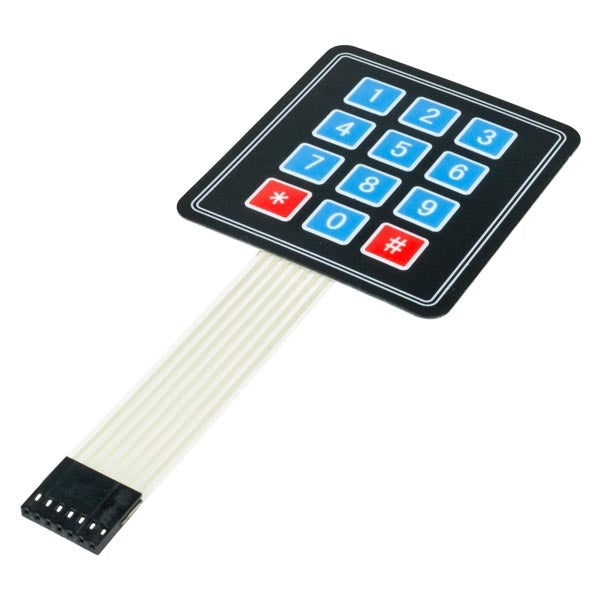How Membrane Switches Are Shaping the Future of Electronic Interfaces
How Membrane Switches Are Shaping the Future of Electronic Interfaces
Blog Article
Recognizing Membrane Layer Changes: The Key to Resilient and Reputable Controls

What Are Membrane Layer Switches?
Membrane layer buttons are an innovative service in the world of customer interface modern technology, combining functionality and style seamlessly. These gadgets act as a user interface in between users and electronic systems, integrating numerous components right into a small format. Commonly built from versatile, thin layers of materials, membrane buttons are made to react to touch, allowing users to interact with equipment and electronic gadgets efficiently.
The main components of a membrane layer switch consist of a published circuit layer, visuals overlay, and a spacer layer that prevents unintended activation. The graphic overlay can be personalized to reflect brand identity or individual choices, improving appearances while ensuring usability. Membrane switches are generally used in various applications, consisting of clinical tools, customer electronics, and commercial tools, owing to their longevity and resistance to environmental elements such as wetness and dust.
Among the key advantages of membrane buttons is their capability to hold up against damage, making them ideal for high-traffic atmospheres. Additionally, they are lightweight and require minimal space, enabling ingenious styles in product growth. Generally, membrane layer switches over stand for a functional and effective option for contemporary digital interfaces, weding technology with user-centric design concepts.
Just How Membrane Layer Changes Job
The operation of membrane layer changes joints on an easy yet efficient device that converts customer input right into electronic signals. When an individual presses the button, the leading layer warps, allowing a conductive component in the circuit layer to make call with a corresponding conductive pad on the bottom of the graphic overlay.
The design of membrane layer buttons can differ, yet they often integrate domes or responsive aspects to supply feedback to the customer, boosting the general experience - membrane switch. The products used in membrane switches, such as polyester or polycarbonate, add to their sturdiness and resistance to environmental factors, consisting of dampness and dust. The printed circuits are normally encapsulated, which safeguards them from wear and tear over time.
Advantages of Membrane Switches

Furthermore, membrane layer switches are understood for their longevity. Created from durable products, they are resistant to dust, wetness, and physical wear, which considerably expands their life expectancy compared to standard mechanical switches. This longevity makes them particularly ideal for high-traffic environments and applications calling for longevity.
Another considerable benefit is the ease of cleansing and maintenance. The smooth surface of membrane layer changes decreases dust build-up and is frequently unsusceptible spills, making them ideal for setups that need constant sanitization.
In addition, membrane buttons supply a structured profile, bring about a thinner layout that can be incorporated into numerous gadgets without including bulk. This attribute not just enhances the visual charm but also adds to a more ergonomic product layout.
Applications of Membrane Buttons
User-friendly and functional, membrane switches locate applications throughout a large range of markets, including medical devices, consumer electronic devices, and commercial devices. In the clinical field, these switches are integral to tools such as diagnostic tools, individual tracking systems, and mixture pumps, where dependability and simplicity of cleaning are vital. Their ability to endure extreme atmospheres and maintain performance makes them excellent for such applications.

In consumer electronics, membrane layer switches are utilized in products like microwaves, cleaning equipments, and remotes - membrane switch. Their smooth design allows for instinctive interface, boosting the general individual experience while giving toughness useful source and resistance to tear and put on
Commercial equipment likewise profits from membrane switches, particularly site here in control panels for machinery and automation systems. These switches use security versus dust and wetness, making sure consistent efficiency in tough atmospheres. Their adjustable attributes permit producers to tailor them to details functional demands, improving efficiency and performance.
Selecting the Right Membrane Switch
When selecting a membrane layer switch, it is important to consider various factors that affect efficiency and viability for certain applications. The key factors to consider include environmental problems, tactile responses, longevity, and design specs.
First, analyze the operating environment; buttons exposed to dampness, chemicals, or extreme temperature levels require details materials to ensure durability and capability. Next off, review the need for tactile comments. Relying on customer interaction, some applications may gain from a tactile response to verify activation, while others may favor a non-tactile style for aesthetic reasons.
Longevity is one more critical element; membrane buttons ought to be created to stand up to regular use, influences, and abrasion. Make sure the selected switch can endure the expected lifecycle, specifically in high-usage circumstances.

Verdict
In conclusion, membrane changes act as important elements in the style of trusted and resilient control systems throughout various markets. Their small layout, integrated with durable construction and adjustable functions, boosts customer interaction while guaranteeing longevity sought after atmospheres. The flexibility of membrane layer switches over enables tailored services that fulfill certain operational needs, enhancing their relevance in contemporary innovation. As markets continue to advance, the value of incorporating reliable membrane button options can not be overstated.
Membrane switches represent an essential aspect of modern-day user Learn More Here interface design, mixing performance with durability in different applications.Membrane layer buttons are an advanced service in the world of customer interface technology, combining capability and style seamlessly. Typically built from versatile, slim layers of products, membrane switches are made to react to touch, making it possible for individuals to communicate with machinery and electronic tools effectively.
The design of membrane layer buttons can vary, but they often include domes or tactile aspects to provide responses to the customer, boosting the overall experience.In final thought, membrane changes serve as vital parts in the design of long lasting and reliable control systems across numerous markets.
Report this page